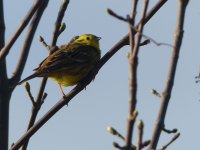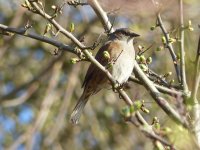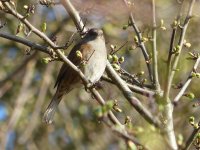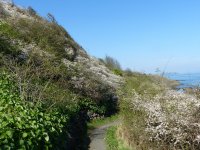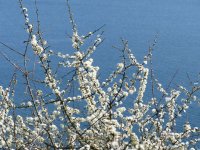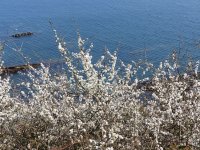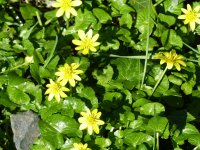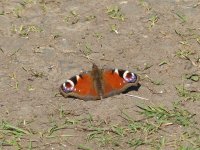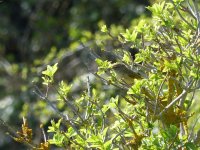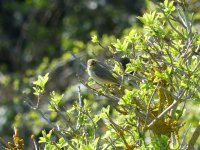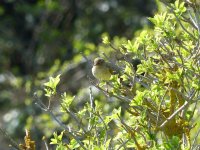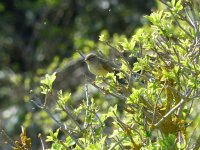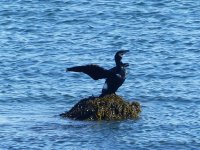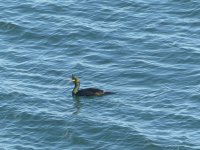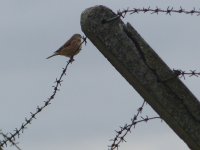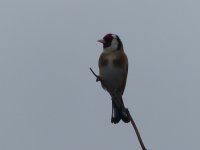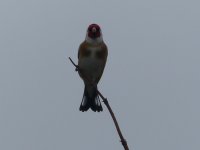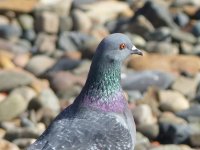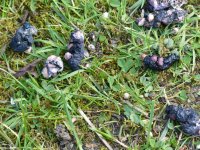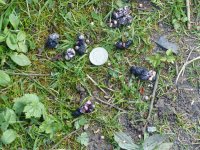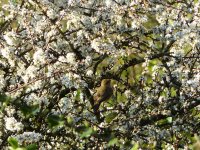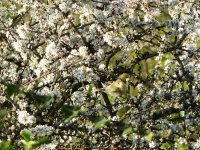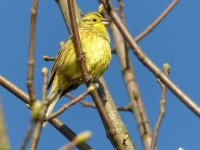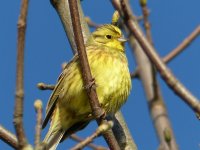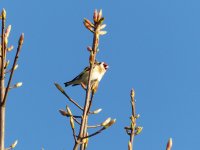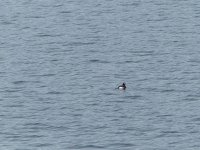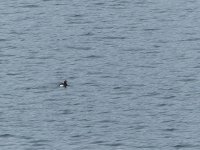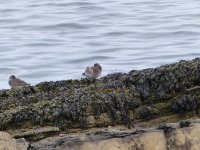Scope Day
I was dropped off at the Seafield car park at 09:15 hrs, with an arrangement with Mrs Goose to pick me up in Kinghorn at 11:15 hrs. Tide was a couple of hours short of high. Wind fresh to strong from the SW which meant I would be walking with my face into it for most of the way. Sky was clear and strong sleight from a low sun was bouncing off the waters of the Firth of Forth, making sea viewing uncomfortable if you got your angles wrong.
For a change, I'd brought the scope and tripod with me. I set it up initially on the grassy area between the car park and the beach. The extra range immediately gave me elevated numbers of Eider, but nothing much else. I missed getting a view of some small birds at the waters edge, but suspected Rock Pipit.
The Herring Gull count started at this first scan and built off and on throughout the session. Moving along to the south end of the sea wall, I managed to pick up a couple of Long-Tailed Duck. There sounded like there was Goldfinch in the scrum behind me as I scan the sea, but I could not pick up anything visually.
Moving towards the harbour, I did locate some House Sparrow in the scrub. I could also hear Robin and Wren, but they were not for showing, so were not counted.
The harbour was well flooded, but not with birds. A couple of Great Black-Backed Gulls were sat on the furthest out remnant of the broken down wall, along with a Cormorant and a Turnstone. Continuing on towards the Seafield tower, I started picking up Redshank on the rocks, but not in any great numbers. On a sandy strip, I found a lone Bar-Tailed Godwit.
At the tower, I scanned the rocks looking for a reported Kingfisher, but it wasn't showing today. Common Seals lay basking on the few remaining rocks that were not submerged.
Covering the short stretch to the tower had taken almost an hour. The extra time taken scanning with the scope had slowed me down a little. I pushed on up the hill. Down on the rocks I spotted a lone Curlew. In the bushes I found a male Chaffinch. From memory that is the first Chaffinch on the patch this year. I always feel that there should be more Chaffinch around on the patch, but there always seems to only be the odd one or two.
Reaching Stone Dyke Point, I followed the wall down to the end of the point. A quick scan with the binoculars revealed something out there not recorded before. I knew it was new to the patch, but could not yet determine exactly what it was From what I had seen, I was hoping for one of the Divers.
Quickly setting up the scope, I started searching for the bird again. I could not find it initially, but did pick up on a couple of Guillemot. I continued scanning beyond the Guillemot, and eventually, I found my bird again. The shape of the head and the dark cap said Great Crested Grebe, but I wasn't convinced. Could it be one of the other grebes I asked myself. I was sure it wasn't a diver, but my knowledge of grebes wasn't good enough for an on the spot identification.
I started making notes and even attempted a sketch of the head shape and markings. I also made a mental note of the size in comparison to an Eider that drifted into view. Having now gone through the guides I have at home, I have concluded that my first instinct was correct and that the bird could not be anything other than a Great Crested Grebe in winter garb. Not a new bird to me, but a patch tick.
I'd spent a lot of time out on the point, and I was now in danger of being late for my pick up. I had to hurry through the rest of the patch, but did manage to add Shag, Dunnock, Goldfinch and Robin to the list before I reached Kinghorn.
Lesson learned today is that I have to take the scope down to the patch more often. I would not have got the L-T Duck, the Guillemot of a conclusive ID on the Grebe without it.
THE LIST UPDATED
1. Bar-tailed Godwit
2. Black-headed Gull
3. Black-tailed Godwit
4. Blackbird
5. Blue Tit
6. Bullfinch
7. Carrion Crow
8. Chaffinch
9. Common Buzzard
10. Common Gull
11. Common Scoter*
12. Common Tern
13. Cormorant
14. Curlew
15. Dunnock
16. Eider
17, Feral Pigeon
18. Fulmar
19. Goldcrest
20. Goldeneye
21. Goldfinch
22. Goosander
23. Great Black-backed Gull
24. Great Crested Grebe
25. Great Tit
26. Greenfinch
27. Greenshank
28. Grey Heron
29. Greylag
30. Grey Wagtail
31. Guillemot
32. Herring Gull
33. Housemartin*
34. House Sparrow
35. Kestrel*
36. Kingfisher
37. Knot
38. Lesser Black-backed Gull*
39. Long-tailed Duck
40. Long-tailed Tit
41. Magpie
42. Mallard
43. Mute Swan
44. Oystercatcher
45. Pheasant
46. Pied Wagtail (Yarrellii)
47. Pink-Footed Goose
48. Peregrine
49. Purple Sandpiper
50. Red-Throated Diver*
51. Red-breasted Merganser*
52. Redshank
53. Reed Bunting
54. Ringed Plover
55. Robin
56. Rock Pipit
57. Ruff
58. Sanderling
59. Sandwich Tern
60. Sedge Warbler*
61. Shag
62. Song Thrush
63. Sparrowhawk
64. Starling
65. Stonechat*
66. Swallow
67. Turnstone
68. Velvet Scoter
69. Whimbrel*
70. Willow Warbler*
71. Wood Pigeon
72. Wren.
73. Yellowhammer




